The concept of restoration, taken literally, might presume that we can replace missing parts or remove added ones. But while we can eliminate invasive alien species on a specific site, we cannot necessarily take away all new elements. How does the restorationist, for example remove the large amounts of nitrogen raining down the landscape from air pollution, seriously modifying one of the most basic processes, the nitrogen cycle?
Not is it any easier to add the lost pieces. Where do we find the huge flocks of migratory passenger pigeons whose numbers collapsed from billions to extinction with the first great wave of deforestation or the once numerous but now extinct Carolina parakeets of the eastern forest?
We simply do not know enough about our ecosystems; nor are we yet
able to modify our lifestyles and land use to recreate those conditions necessarily to truly restore a prior state, extinctions aside.
The management of complex living systems necessarily involves many
interrelated natural processes and functions. Some of these natural processes and functions we may seek to replace or emulate; others we may try to rehabilitate or reestablish. The cumulative result is intended
to more toward restoration. This is a heuristic process in which we will
learn as we go along. If we are committed to sustaining indigenous plants and animals, we will, over time, discover new approaches and techniques that cannot be implemented or even imagined, today.
We have written this guide book primarily as a stimulus to those individuals and groups who want to do something constructive about our deteriorating forest patches. We hope it will assist in this restoration process providing an approach for assessing each site, guidelines for determining management goals and an overview of appropriate management and restoration techniques. The objective
is to provide a framework for action rooted in the idea that those who use and care for a landscape should be responsible for sustaining its value over time. The goal is to develop programs to ensure that most of our actions will be restorative and not destructive. We have set ourselves on a critical path and the direction will be shaped by our goals.
The Once and Future Forest
Leslie Jones Sauer
Introduction
Leslie Jones Sauer
Introduction
Perhaps now that once again the horses have been taken to the water stream, they will taste the water. Maybe not in Puercorico USA, but in your country far away, things will be put in the correct perspective. Every jerk/jerkette bored to death decides to 'restore', plant, reforest,
save this or that in this concrete/asphalt isle.
The result is tens or hundreds of ignorant fools with good intentions, without information, credentials or experience doing at will, what they think is correct or helpful to the environment.
In the case of Alberto Areces Mallea and Gabriela Ocampo is the contrary, people with college
degrees making the most stupid mistakes in the name of the "species in danger of extinction" or
endemic ones. They are not the only ones, the municipalities, government agencies: 007 Recursos Naturales, Fideicomiso and Parques Nacionales are under the direction of ignorant
fools, with similar employees destroying with foolish management practices the whole environment, but with futile attempts to protect, save, enhance it. Even worse, spending such
amount of money as in Parque Donha Ines, is a real waste considering that soil, Flora and Fauna was totally destroyed without any serious inventory, soil analysis, plan, or vision to protect the land and living creatures. That is that.
save this or that in this concrete/asphalt isle.
The result is tens or hundreds of ignorant fools with good intentions, without information, credentials or experience doing at will, what they think is correct or helpful to the environment.
In the case of Alberto Areces Mallea and Gabriela Ocampo is the contrary, people with college
degrees making the most stupid mistakes in the name of the "species in danger of extinction" or
endemic ones. They are not the only ones, the municipalities, government agencies: 007 Recursos Naturales, Fideicomiso and Parques Nacionales are under the direction of ignorant
fools, with similar employees destroying with foolish management practices the whole environment, but with futile attempts to protect, save, enhance it. Even worse, spending such
amount of money as in Parque Donha Ines, is a real waste considering that soil, Flora and Fauna was totally destroyed without any serious inventory, soil analysis, plan, or vision to protect the land and living creatures. That is that.
BALL/BURLAP REPORT
I want to inform that the Calliandra has officially
survived the relocation, the Guaicaum officinale is still
under observation, but not in danger of passing away.
The Malpighia is also doing great, not mentioned before.
This one went from a pot in the north side to the ground
in the south.
I want to inform that the Calliandra has officially
survived the relocation, the Guaicaum officinale is still
under observation, but not in danger of passing away.
The Malpighia is also doing great, not mentioned before.
This one went from a pot in the north side to the ground
in the south.


















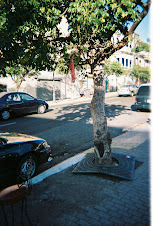-25.jpg)
-24.jpg)
























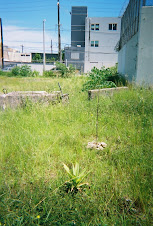




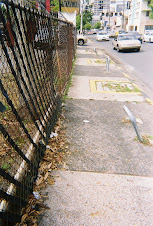
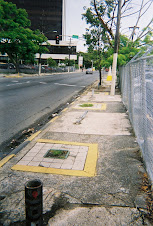
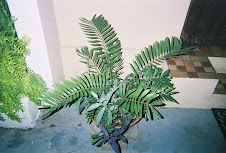




-22.jpg)
-25.jpg)
-24.jpg)






-16.jpg)
-13.jpg)
-08.jpg)
































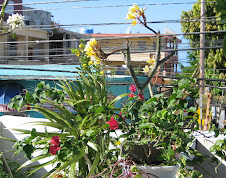
















No hay comentarios:
Publicar un comentario